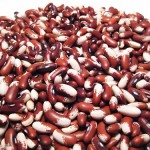It’s hard to beat the beauty of the big late-summer blooms of hydrangeas. With multiple cultivars on the market, with impressive fall leaf color and diverse bloom sets, the options for your garden are many.
Hydrangeas are a sturdy shrub and most require little care but light pruning. And since hydrangeas are terminal bloomers, flowering on new growth, pruning increases the number of bud sets!
The most popular hydrangeas are listed here. For images of each click through the link:
- Bigleaf, Hydrangea macrophylla, also called French, Japanese or snowball hydrangea, is both a florist plant and landscape plant.
- Panicle, Hydrangea paniculata, is named so because of its large cone shaped flowers.
- Oakleaf, Hydrangea quercifolia, has the showiest fall color of all.
- Smooth, Hydrangea arborescens, is what I consider to be the “old fashion” hydrangea of my great-grandmother’s gardens. This one spreads by runners.
The National Arboretum suggests the following for pruning:
Established bigleaf, panicle, oakleaf and smooth hydrangea plants can often benefit from regular pruning. Removing about one-third of the oldest stems each year will result in a fuller, healthier plant. This type of pruning is easiest to do in winter, since the absence of leaves makes it easier to see and reach inside plants.
Gardeners may also want to prune to control height or to remove old flower heads. The best time for this type of pruning differs between species. Bigleaf and oakleaf hydrangea, which flower on previous year’s growth, should be pruned shortly after flowering is complete. Panicle and smooth hydrangea flower on current year’s growth and can be pruned anytime from late summer until early spring. If pruning these two species in the spring, try to prune before leaves appear. Plants of H. arborescens ‘Annabelle’ have been known to produce a second flush of flowers if pruned lightly after the first flowering.
Stems of bigleaf hydrangea that have been damaged by cold should be pruned as soon as it is determined that they are dead. Watch for new growth at the base of the plant. If your plant has basal shoots that are 6 to 8 inches in length, but the upper parts of the stems are still bare, then the bare stems need to be removed. For bigleaf hydrangea plants that are subject to frequent weather-related dieback, other than removing the dead stems, you probably won’t ever need to do any other pruning – Mother Nature has been doing the work for you.
For winter beauty, leave the flowers dry on the stems, prune back in early spring.
The autumn beauty of hydrangeas, like lilacs in spring, are foundational for my gardens. I hope you will add them to your landscape as well.












